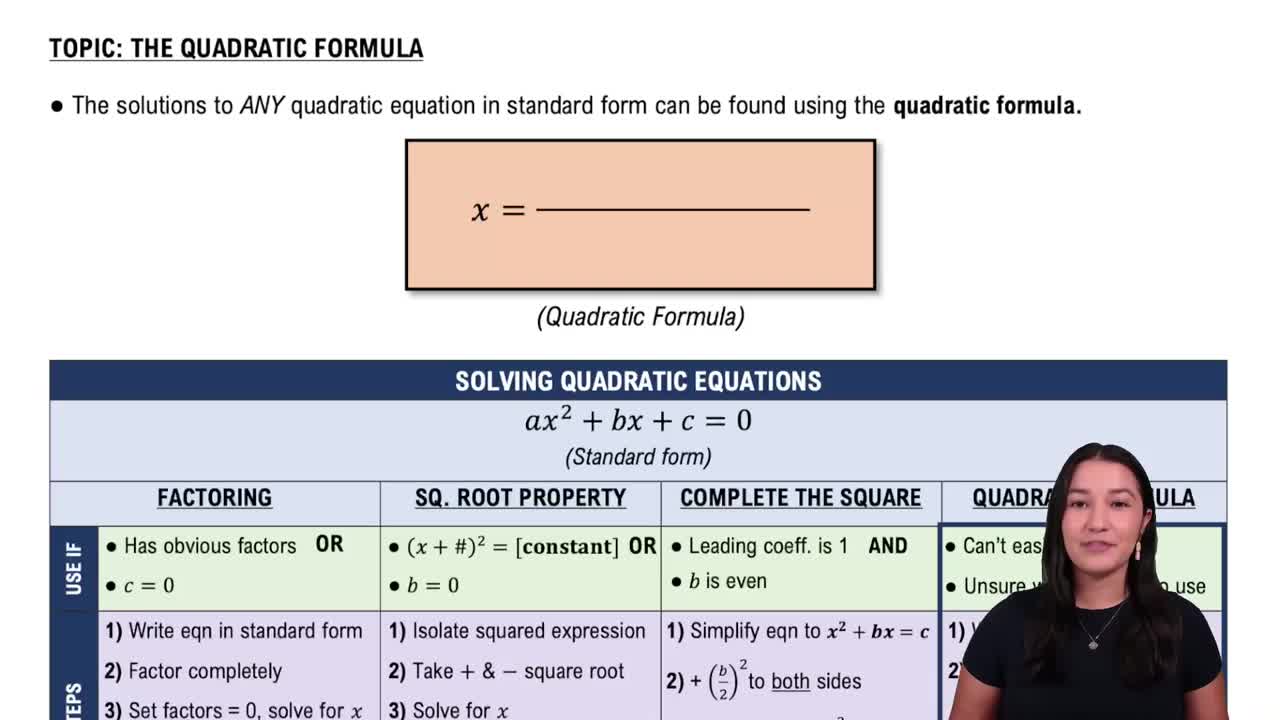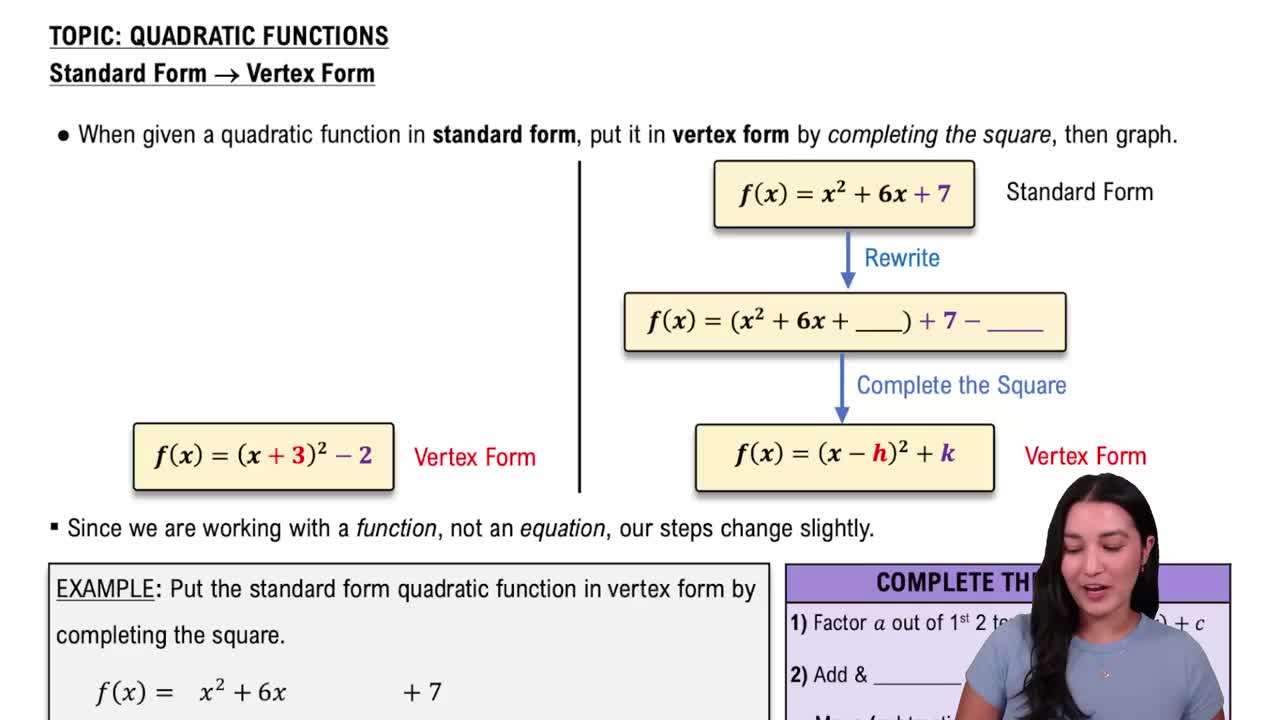Table of contents
- 0. Review of Algebra4h 16m
- 1. Equations & Inequalities3h 18m
- 2. Graphs of Equations43m
- 3. Functions2h 17m
- 4. Polynomial Functions1h 44m
- 5. Rational Functions1h 23m
- 6. Exponential & Logarithmic Functions2h 28m
- 7. Systems of Equations & Matrices4h 6m
- 8. Conic Sections2h 23m
- 9. Sequences, Series, & Induction1h 19m
- 10. Combinatorics & Probability1h 45m
4. Polynomial Functions
Quadratic Functions
Problem 84
Textbook Question
Define the quadratic function ƒ having x-intercepts (1, 0) and (-2, 0) and y-intercept (0, 4).
 Verified step by step guidance
Verified step by step guidance1
<insert step 1: Start by using the fact that the x-intercepts of a quadratic function are the roots of the equation. If the x-intercepts are (1, 0) and (-2, 0), then the quadratic function can be expressed in factored form as f(x) = a(x - 1)(x + 2).>
<insert step 2: Use the y-intercept to find the value of 'a'. The y-intercept is the point where the graph of the function crosses the y-axis, which occurs when x = 0. Substitute x = 0 and y = 4 into the equation: 4 = a(0 - 1)(0 + 2).>
<insert step 3: Simplify the equation from step 2 to solve for 'a'. This will give you the specific quadratic function that fits the given intercepts.>
<insert step 4: Once you have found the value of 'a', substitute it back into the factored form of the quadratic function to get the complete equation.>
<insert step 5: Expand the factored form to write the quadratic function in standard form, which is f(x) = ax^2 + bx + c.>
Recommended similar problem, with video answer:
 Verified Solution
Verified SolutionThis video solution was recommended by our tutors as helpful for the problem above
Video duration:
6mPlay a video:
Was this helpful?
Key Concepts
Here are the essential concepts you must grasp in order to answer the question correctly.
Quadratic Function
A quadratic function is a polynomial function of degree two, typically expressed in the form ƒ(x) = ax² + bx + c, where a, b, and c are constants. The graph of a quadratic function is a parabola, which can open upwards or downwards depending on the sign of 'a'. Understanding the general form is essential for defining specific quadratic functions based on given intercepts.
Recommended video:

Solving Quadratic Equations Using The Quadratic Formula
X-Intercepts
X-intercepts are the points where a function crosses the x-axis, meaning the output (y-value) is zero. For a quadratic function, if the x-intercepts are known, they can be used to express the function in factored form as ƒ(x) = a(x - r1)(x - r2), where r1 and r2 are the x-intercepts. In this case, the x-intercepts (1, 0) and (-2, 0) will help in constructing the quadratic function.
Recommended video:
Guided course

Graphing Intercepts
Y-Intercept
The y-intercept is the point where a function crosses the y-axis, which occurs when the input (x-value) is zero. For a quadratic function, knowing the y-intercept allows us to determine the constant term 'c' in the standard form. In this question, the y-intercept (0, 4) indicates that when x = 0, the function value is 4, providing a crucial piece of information for defining the quadratic function.
Recommended video:
Guided course

Graphing Intercepts

 7:42m
7:42mWatch next
Master Properties of Parabolas with a bite sized video explanation from Callie
Start learningRelated Videos
Related Practice













